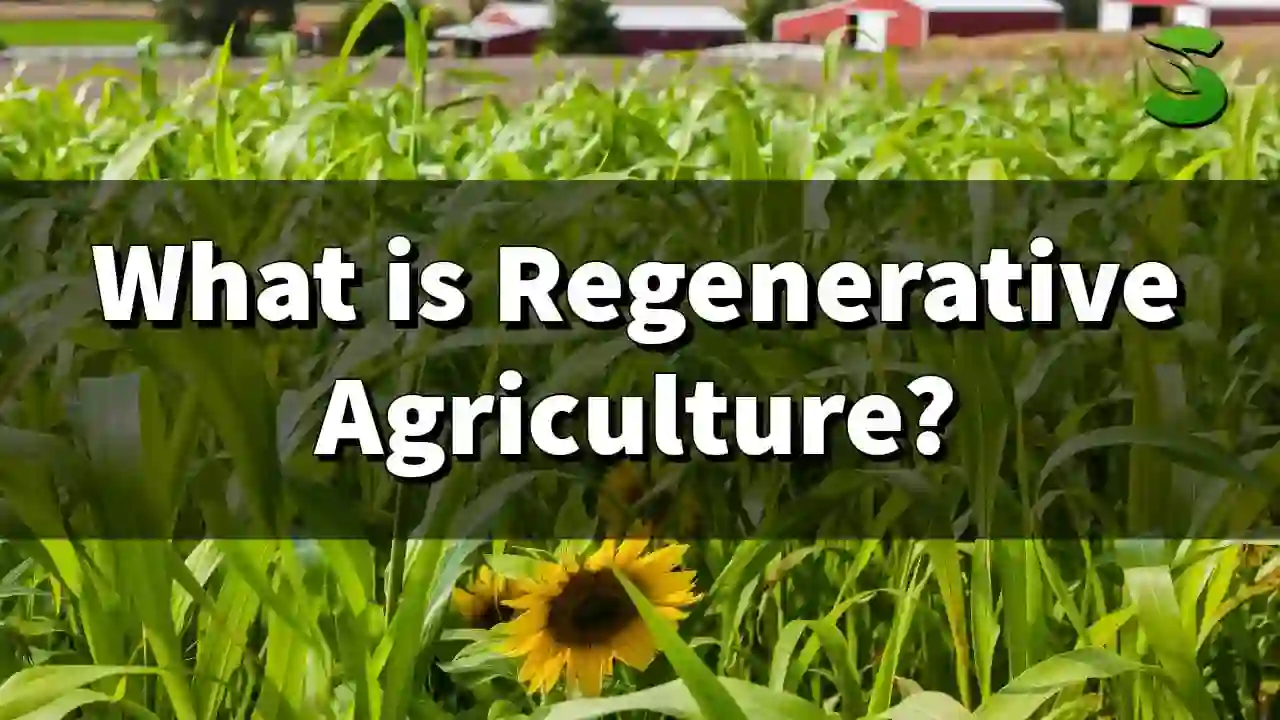Regenerative agriculture is a holistic approach to farming that focuses on improving soil health, biodiversity, and the overall resilience of the farming system. It’s not just about “doing less harm” to the environment; it’s about actively making the land healthier and more productive than it was before.
Think of it like this: conventional agriculture is like taking money out of a bank account without ever making any deposits. Over time, the account will eventually run dry. Regenerative agriculture, on the other hand, is like making regular deposits into the bank account. Not only are you able to withdraw what you need, but the account is actually growing and becoming more valuable over time.
Defining Regenerative Agriculture
Defining regenerative agriculture isn’t simply a matter of penning a dictionary entry. It’s about capturing the essence of a multi-layered approach to farming that prioritizes ecological health and long-term sustainability. Here are some angles to consider when defining this dynamic practice:
1. From the ground up:
- Regenerative agriculture fosters living soil. Unlike conventional practices that can deplete and degrade soil, regenerative methods focus on building organic matter, fostering microbial diversity, and enhancing soil structure. This creates a thriving ecosystem beneath the surface, leading to improved water retention, nutrient cycling, and overall health.
2. Beyond efficiency, towards resilience:
- It’s not just about producing food, it’s about building resilience. While conventional agriculture often optimizes for short-term yield, regenerative agriculture prioritizes building a resilient farm system that can withstand climatic fluctuations, resource scarcity, and unpredictable challenges. This involves diversifying crops and livestock, managing water wisely, and fostering self-regulating ecological processes.
3. Harmony with nature, not domination:
- It mimics natural ecosystem functions. Conventional agriculture often treats nature as an adversary, needing control and manipulation. Regenerative agriculture, on the other hand, seeks to work with nature, mimicking natural cycles and processes. This includes practices like integrated pest management, rotational grazing, and cover cropping, which foster a web of beneficial relationships within the farm ecosystem.
4. Beyond the farm gate:
- It considers the bigger picture. Regenerative agriculture extends beyond the boundaries of the farm, recognizing the interconnectedness of ecosystems and the broader impact of agricultural practices. This includes minimizing external inputs and promoting local food systems, thereby contributing to a healthier planet and stronger communities.
5. A continuous loop of learning and improvement:
- It’s an ongoing journey of adaptation and innovation. There’s no one-size-fits-all approach to regenerative agriculture. Each farm and context is unique, requiring continuous learning, experimentation, and adaptation. Farmers become stewards of the land, actively monitoring, evaluating, and adjusting their practices to optimize the health of their farms and the communities they serve.
So, when defining regenerative agriculture, remember it’s not just a set of practices, but a philosophy and a movement. It’s about building healthy soil, resilient ecosystems, and a thriving future for agriculture and the planet.
Benefits of Regenerative Agriculture
Regenerative agriculture isn’t just a buzzword – it’s a transformative approach to farming that nourishes not just our plates, but the entire planet. Its benefits ripple outwards, impacting everything from soil health to climate change and farmer livelihoods. Let’s delve into some of the key advantages of embracing this regenerative revolution:
1. Soil Symphony:
Imagine soil not as inert dirt, but as a teeming orchestra of life. Regenerative agriculture amplifies this symphony by:
- Boosting organic matter: Through practices like cover cropping and compost application, soil becomes spongy and rich, retaining water and nutrients more effectively.
- Nurturing microbial diversity: These tiny soil superheroes decompose organic matter, fix nitrogen, and fight off pathogens, creating a robust underground ecosystem.
- Reducing erosion: Healthy soil acts like a protective blanket, preventing precious topsoil from washing away, safeguarding the land’s productivity for generations.
Healthy soil teeming with life
2. Climate Champions:
Regenerative agriculture tackles climate change head-on by:
- Sequestering carbon: Plants draw down carbon dioxide from the atmosphere and store it in their tissues and the soil. This natural carbon capture combats the greenhouse effect, mitigating climate change.
- Enhancing water resilience: Healthy soil acts like a sponge, absorbing and storing more rainwater, making farms more resistant to droughts and floods.
- Reducing reliance on fossil fuels: Practices like no-till farming minimize tractor use and associated emissions, contributing to a cleaner future.
field of regenerative crops capturing carbon dioxide
3. Biodiversity Bonanza:
Regenerative agriculture fosters a thriving tapestry of life by:
- Providing habitat for pollinators and beneficial insects: Diverse plant communities attract a variety of pollinators, like bees and butterflies, crucial for food production and ecosystem health.
- Reducing reliance on pesticides: By creating a balanced ecosystem, natural predators keep pest populations in check, minimizing the need for harmful chemicals.
- Supporting wildlife: Regenerative farms offer refuge for birds, mammals, and reptiles, contributing to a richer and more resilient natural world.
diverse and vibrant regenerative farm
4. Farmer Flourishing:
Regenerative agriculture empowers farmers by:
- Improving soil fertility and yields: Healthy soil leads to naturally higher crop yields, boosting farmer income and food security.
- Reducing input costs: By relying less on synthetic fertilizers and pesticides, farmers save money and become less reliant on external inputs.
- Building resilience: Diversified farms are better equipped to handle extreme weather events and market fluctuations, providing greater stability for farmers and their families.
smiling farmer standing in a field of regenerative crops
5. Community Connections:
Regenerative agriculture strengthens communities by:
- Supporting local food systems: By connecting farmers directly to consumers, regenerative agriculture revitalizes local economies and fosters stronger community bonds.
- Promoting food justice: Access to nutritious, locally grown food becomes more equitable when regenerative practices increase farm viability and diversity.
- Investing in future generations: By prioritizing soil health and sustainability, regenerative agriculture ensures a healthy planet and abundant food for generations to come.
farmers market with fresh produce from regenerative farms
The benefits of regenerative agriculture are far-reaching and interconnected. By nurturing the soil, we nourish the planet and ourselves, creating a ripple effect of positive change that transcends the farm gate. So, let’s embrace this transformative approach and cultivate a future where food production and environmental health go hand in hand.
Remember, regenerative agriculture is a journey, not a destination. Each farm and context is unique, requiring continuous learning, experimentation, and adaptation. But the potential rewards are immense, offering a path towards a healthier planet, thriving communities, and a brighter future for all.
The Five Pillars of Regeneration: Principles Guiding a Thriving Farm
Regenerative agriculture isn’t just a collection of techniques; it’s a philosophy deeply rooted in principles that guide practices towards building healthy soil, resilient ecosystems, and thriving farms. Let’s dive into the five core pillars that underpin this regenerative revolution:
1. Minimize Soil Disturbance:
Think of soil as a living organism, not just dirt. Excessive tillage disrupts vital microbial communities, degrades soil structure, and releases stored carbon. Regenerative principles aim to:
- Embrace no-till or minimal tillage: Minimize soil manipulation to preserve microbial life, organic matter, and soil structure.
- Utilize cover crops: Plant diverse cover crops between cash crops to protect the soil, fix nitrogen, and suppress weeds.
- Promote mulching: Layer organic materials like compost or straw on the soil surface to retain moisture, suppress weeds, and regulate temperature.
2. Keep the Soil Covered:
Bare soil is vulnerable to erosion, nutrient loss, and the scorching sun. Regenerative agriculture keeps the soil covered year-round to:
- Maintain living roots: Integrate perennial plants or diverse crop rotations to ensure continuous root presence in the soil, binding it and increasing nutrient uptake.
- Utilize cover crops: Cover crops protect the soil during fallow periods, preventing erosion and adding organic matter.
- Embrace agroforestry: Integrate trees and shrubs within the farming system to provide shade, fix nitrogen, and improve soil health.
3. Increase Plant and Microbial Diversity:
Monocultures weaken ecosystems and deplete soil health. Regenerative agriculture embraces diversity to:
- Practice crop rotation: Rotate diverse crops with different root structures and nutrient requirements to prevent soil depletion and enhance soil health.
- Interplant and polyculture: Grow multiple crops together to create a more natural, biodiverse ecosystem that encourages beneficial insects and suppresses pests.
- Integrate livestock: Strategically graze animals to mimic natural herbivore patterns, promote nutrient cycling, and improve soil fertility.
4. Maintain Continuous Living Plant Roots:
Living roots are the lifeblood of healthy soil. Regenerative agriculture ensures year-round root presence to:
- Utilize cover crops: Plant cover crops between cash crops to maintain living roots and provide organic matter to the soil.
- Embrace permaculture principles: Design farm systems with perennial plants and integrated livestock to mimic natural ecosystems and ensure continuous root presence.
- Minimize fallow periods: Implement practices like intercropping or no-till to avoid leaving fields bare and promote continuous root activity.
5. Integrate Livestock:
Animals are not just livestock; they can be powerful partners in regeneration. Regenerative agriculture utilizes their unique abilities to:
- Implement rotational grazing: Move animals strategically to mimic natural grazing patterns, avoid overgrazing, and promote nutrient cycling.
- Utilize managed intensive grazing: Optimize grazing density and duration to improve soil fertility, suppress weeds, and build soil organic matter.
- Compost manure and integrate animal waste: Utilize animal waste as valuable compost to return nutrients to the soil and close the nutrient loop.
These five principles form the foundation of regenerative agriculture. They are not rigid rules, but a flexible framework that farmers can adapt and refine based on their specific context and needs. By embracing these principles, we can move towards a future where farming not only nourishes us but also regenerates the planet for generations to come.
Regenerative Agriculture Techniques: Building a Thriving Farm, Naturally
Regenerative agriculture isn’t just a buzzword, it’s a toolbox overflowing with techniques that nurture the soil, boost biodiversity, and build resilient farms. Let’s delve into some key practices that bring the principles of regeneration to life:
1. No-Till Farming: Ditch the plow! No-till farming minimizes soil disturbance, protecting precious topsoil and fostering a thriving underground ecosystem.
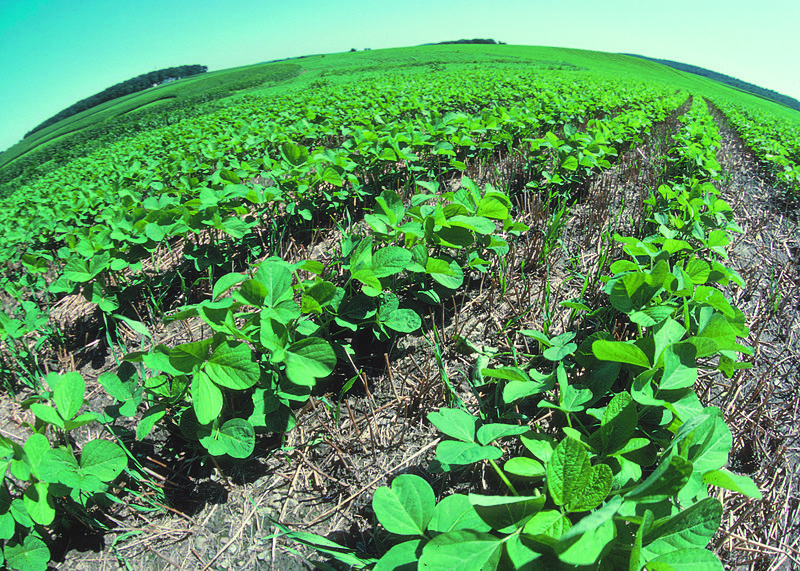
2. Cover Cropping: Think of cover crops as nature’s green blankets. Planted between cash crops, they protect the soil, fix nitrogen, suppress weeds, and add organic matter.
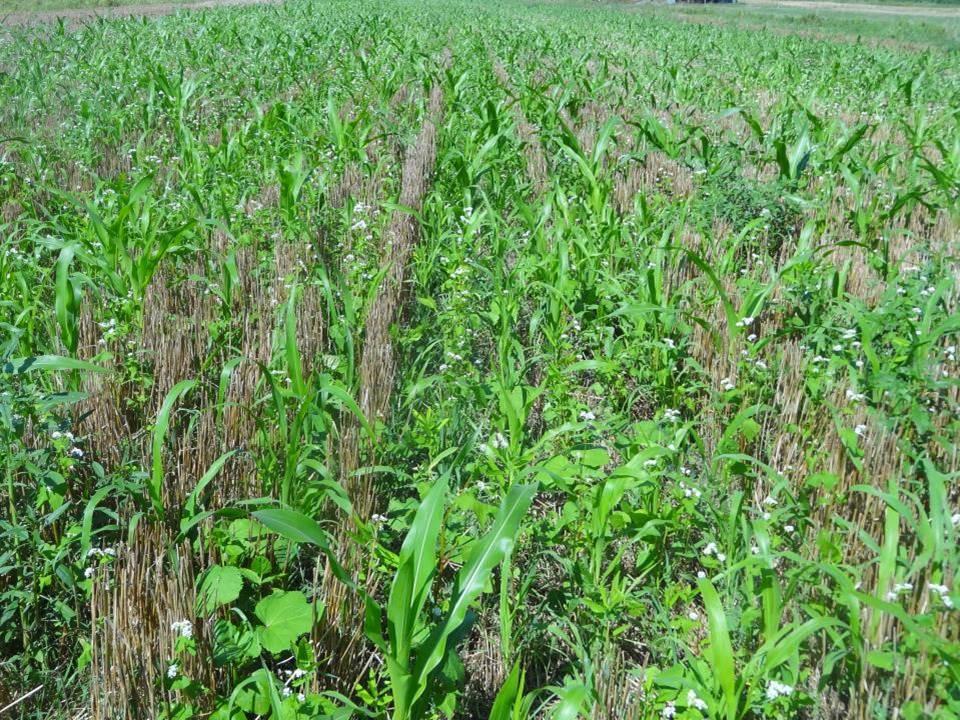
3. Rotational Grazing: Move your livestock like a well-choreographed ballet. Rotational grazing mimics natural herbivore patterns, preventing overgrazing and promoting nutrient cycling.

4. Composting: Waste not, want not! Turn food scraps and animal manure into nutrient-rich compost to nourish the soil and close the nutrient loop.

5. Biochar and Terra Preta: These charcoal-rich wonders hold moisture, enhance soil fertility, and even sequester carbon, making them powerful allies in your regenerative journey.

6. Integrated Pest Management: Ditch the chemical warfare! Instead, attract beneficial insects, plant pest-resistant varieties, and create a balanced ecosystem to keep pests in check naturally.

7. Agroforestry: Trees and shrubs aren’t just pretty decorations; they’re valuable partners in regeneration. Integrate them into your farm to provide shade, fix nitrogen, and improve soil health.

8. Water Harvesting and Management: Make every drop count! Utilize rainwater harvesting, swales, and other techniques to conserve water and build drought resilience.
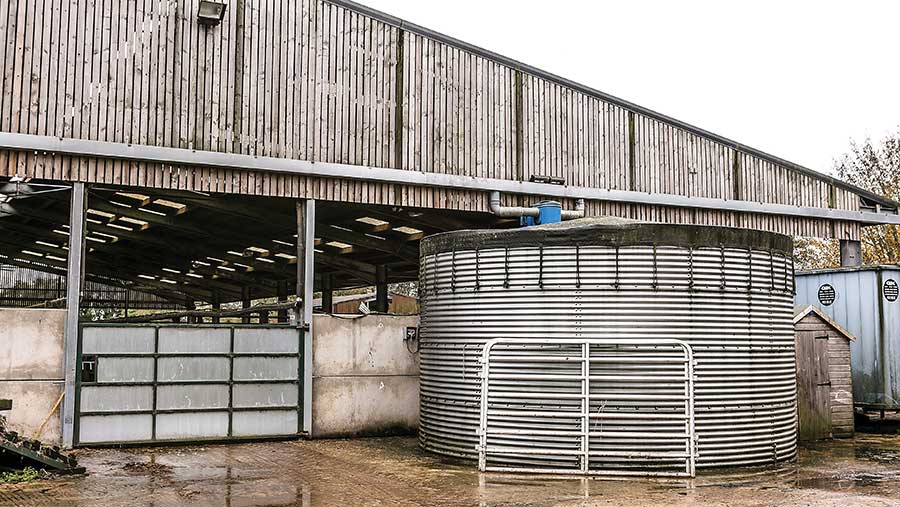
9. Holistic Management: Think beyond the farm gate! Consider the wider ecosystem and community when making decisions, promoting social responsibility and environmental stewardship.
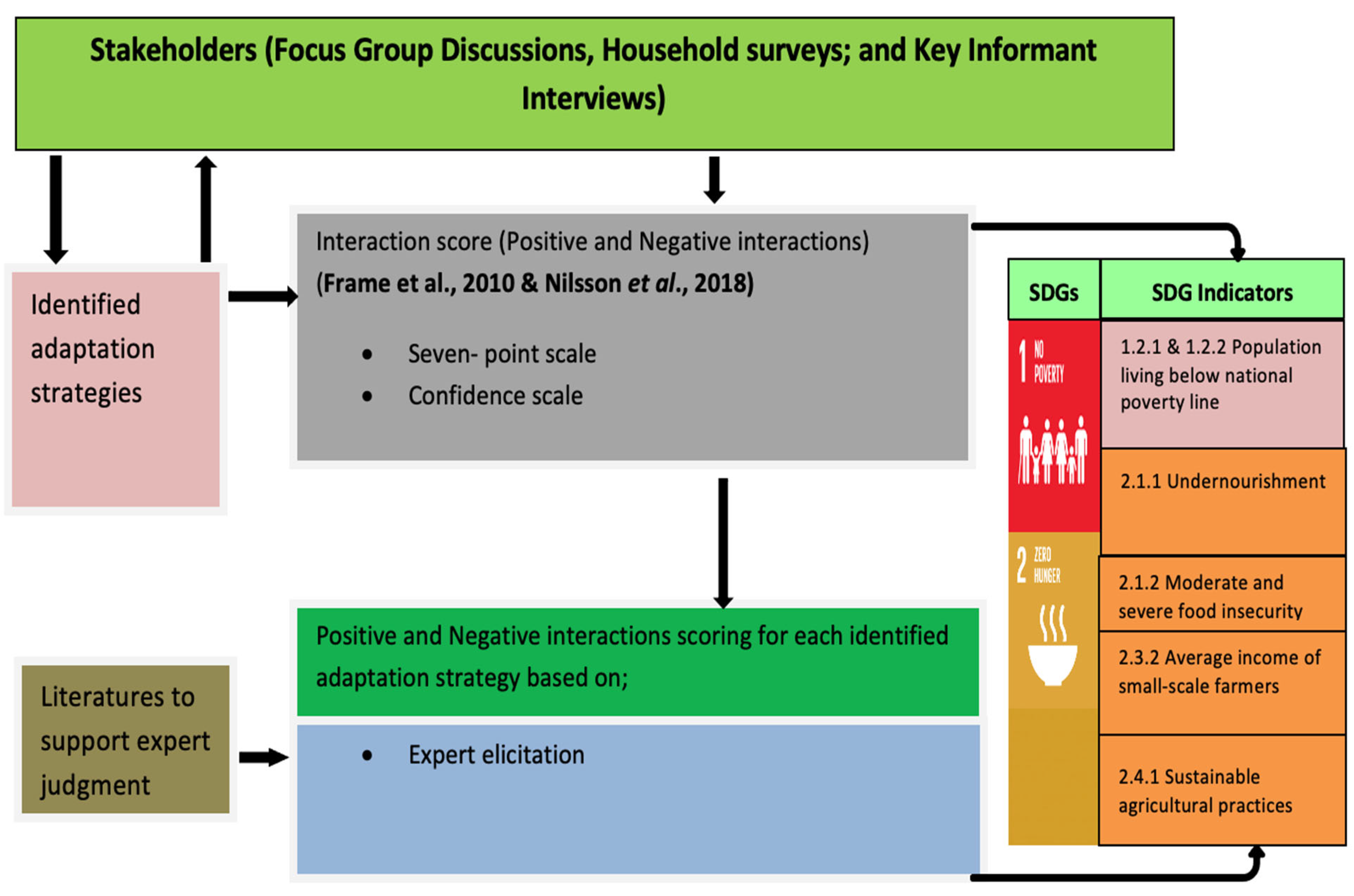
Remember, the beauty of regenerative agriculture lies in its adaptability. These techniques are not a one-size-fits-all recipe, but a customizable toolkit that farmers can adjust to their specific needs and context. Start by experimenting with a few practices, monitor the results, and continuously learn and adapt.
By embracing these techniques and the principles behind them, we can cultivate a future where farms thrive in harmony with nature, nourishing not just our plates, but the planet as well. Let’s embark on this regenerative journey together, one seed, one practice, one vibrant ecosystem at a time!
Regenerative Agriculture in Action: Case Studies from Around the World
While regenerative agriculture might seem theoretical, the reality is that countless farms across the globe are implementing these principles and reaping the rewards. Here are just a few inspiring case studies showcasing the transformative power of regeneration:
1. Rodale Institute: A Pioneering Legacy in Pennsylvania, USA

Founded in 1947, Rodale Institute is a research and education institution that has been at the forefront of organic and regenerative agriculture for decades. Their extensive trials and demonstration farms showcase a diverse range of regenerative practices, from no-till farming and cover cropping to integrated livestock and agroforestry. Rodale’s research has provided invaluable insights into the benefits of regeneration, such as improved soil health, increased yields, and enhanced resilience to climate change.
2. The Buckholt Family Farm: Regenerating Degraded Land in Kansas, USA
The Buckholt family faced a daunting challenge: reviving their farm in Kansas, which had been degraded by conventional practices. By embracing no-till farming, cover cropping, and rotational grazing, they were able to rebuild their soil health, increase yields, and even sequester carbon. Their story is a testament to the power of regeneration to transform even the most challenging landscapes.
3. Terra Luna Foundation: Restoring Rainforests in Costa Rica
Beyond crop production, regenerative agriculture principles can be applied to restoration ecology as well. The Terra Luna Foundation in Costa Rica works to restore degraded rainforests by utilizing practices like direct seeding of native trees, assisted natural regeneration, and agroforestry. Their efforts have not only reforested vast areas but also empowered local communities through sustainable livelihoods.
4. Mainstay Farms: Building Community & Resilience in Australia
Located in Victoria, Australia, Mainstay Farms is a model for building community-supported agriculture (CSA) alongside regenerative practices. They focus on diverse vegetable production, soil health, and fostering connections between farmers and consumers. Their CSA model ensures access to fresh, local produce while providing financial stability for the farm.
5. Domaine de la Borde: Regenerative Winemaking in France

Even the world of winemaking is embracing regeneration. Domaine de la Borde in France is a prime example, implementing no-till farming, cover cropping, and biodiversity-promoting practices in their vineyards. This not only results in healthier grapes and more flavorful wines but also contributes to a more resilient ecosystem.
These are just a handful of the countless case studies demonstrating the diverse applications and benefits of regenerative agriculture. From crop production to land restoration, community building to climate resilience, regeneration offers a promising path towards a more sustainable and thriving future.
As you delve deeper into the world of regenerative agriculture, remember that every farm and context is unique. The key is to learn from these inspiring examples, adapt the principles and techniques to your own needs, and embark on your own journey of regeneration. Together, we can cultivate a future where healthy soil nourishes communities, vibrant ecosystems thrive, and food production becomes a force for positive change on our planet.
The Thorny Path of Regeneration: Challenges Facing the Movement
While regenerative agriculture boasts immense potential, implementing this transformative approach isn’t a walk in the park. Several challenges, like thorns on a rose stem, can hinder its widespread adoption. Let’s delve into some of the key roadblocks:
1. Initial Investment and Transition Costs:
Moving from conventional practices to regeneration often requires upfront investments in new equipment, cover crops, and potentially infrastructure adjustments. This can be daunting for farmers, especially those operating on tight margins. Additionally, there might be a period of yield dips during the transition as the soil adjusts to the new practices.
2. Knowledge and Skill Gaps:
Regenerative agriculture demands a shift in mindset and a deeper understanding of ecological processes. Traditional agricultural education often focuses on conventional methods, leaving a knowledge gap for farmers eager to transition. Access to training, resources, and peer support becomes crucial to bridge this gap.
3. Lack of Market Incentives and Infrastructure:
The current market often values yield and price above soil health and environmental benefits. Regenerative farmers might struggle to command premium prices for their produce, making it difficult to justify the additional effort and cost. Furthermore, robust infrastructure for processing, marketing, and distributing products grown using regenerative practices is often lacking.
4. Policy and Regulatory Barriers:
Existing agricultural policies and regulations can inadvertently favor conventional practices, disadvantaging regenerative farmers. Lack of clear definitions, standards, and certifications for regenerative products can further hinder market recognition and access.
5. Scale and Long-Term Commitments:
Transforming large-scale agricultural systems towards regeneration takes time and commitment. The benefits of regeneration often accrue over the long term, requiring strong partnerships and consistent funding to persevere through initial challenges and sustain the transition.
6. Access to Land and Ownership:
Unequal land ownership and limited access to secure land tenure can pose significant challenges for farmers, particularly those in marginalized communities, who wish to adopt regenerative practices. Without secure land rights, the long-term investment required for regeneration becomes less feasible.
Despite these challenges, the regenerative agriculture movement is gaining momentum. A growing number of initiatives are emerging to address these roadblocks, such as:
- Financial support programs and incentives to mitigate initial investment costs and reward environmental benefits.
- Educational resources and training programs to equip farmers with the knowledge and skills needed for successful implementation.
- Collaborative marketing efforts and development of regenerative agriculture value chains to connect farmers with consumers willing to pay premiums for sustainably produced food.
- Advocacy for policy changes that create a more supportive environment for regenerative farming practices.
- Support for land ownership models and initiatives that provide secure access to land for farmers interested in transitioning to regenerative practices.
By acknowledging and addressing these challenges, we can pave the way for a smoother transition towards a future where regenerative agriculture thrives. Remember, regeneration is not just a set of practices, but a movement fueled by collaboration, innovation, and a shared vision of a healthier planet and more sustainable food systems. Let’s join hands and cultivate a future where the thorny path of regeneration leads to a flourishing bloom of environmental health and well-being for all.
The Seeds of Change: Exploring the Economic Aspects of Regenerative Agriculture
While regenerative agriculture’s ecological benefits are widely recognized, its economic implications might seem less clear-cut. However, beneath the surface, transformative potential blossoms, offering not just environmental rewards but also promising economic advantages. Let’s delve into the fertile ground of this aspect:
1. Cost Savings and Long-Term Efficiency:
- Reduced Input Dependence: Regenerative practices like no-till and cover cropping can decrease reliance on expensive fertilizers and pesticides, leading to cost savings over time.
- Improved Soil Health: Healthy soil leads to increased nutrient retention and water usage efficiency, potentially reducing irrigation costs and enhancing yields.
- Resilience to Climate Extremes: Farms utilizing regenerative practices tend to be more resilient to droughts and floods, minimizing losses and ensuring long-term financial stability.
2. Premium Markets and Consumer Demand:
- Growing Awareness: Consumers are increasingly conscious of environmental sustainability and ethical food production, creating a growing market for products grown using regenerative methods.
- Differentiation and Branding: Farmers practicing regeneration can build unique brand identities, commanding premium prices for their produce, particularly at local farmers markets and through direct-to-consumer channels.
- Value Beyond Yield: Regenerative practices offer additional benefits like carbon sequestration and biodiversity enhancement, potentially attracting investments and support from environmental organizations and conscious consumers.
3. Diversification and Innovation:
- New Income Streams: Regenerative farms can explore diversified revenue streams, like carbon credits, ecosystem services payments, or agritourism, potentially increasing overall income.
- Enhanced Farm Viability: Diversified crop rotations and integrated livestock systems can mitigate risks associated with market fluctuations and weather events, creating a more stable financial foundation.
- Local Food Systems and Community Resilience: Supporting local economies by connecting directly with consumers and building resilient local food systems fosters community prosperity and economic vibrancy.
4. Challenges and Potential Solutions:
- Transition Costs and Knowledge Gaps: While long-term savings are significant, initial investments and potential yield dips during transition can pose challenges. Addressing these requires financial support programs, knowledge sharing initiatives, and collaborative marketing efforts.
- Limited Market Infrastructure and Consumer Understanding: Building robust infrastructure for processing, distributing, and educating consumers about regenerative products is crucial to realizing its economic potential.
- Policy and Regulatory Barriers: Lack of clear definitions and supporting policies can hinder market recognition and access. Advocacy for policy changes and development of regenerative agriculture standards are essential steps.
Seeds of Hope:
The economics of regenerative agriculture aren’t just about immediate profits; they’re about investing in the future. By nurturing the soil, we nurture not only our plates but also our wallets, communities, and the planet. As research advances, consumer demand grows, and support systems strengthen, the economic viability of regenerative agriculture becomes increasingly evident.
Remember, the economic potential of regeneration is not a guaranteed harvest; it requires collective effort and innovative solutions. By supporting farmers, fostering research, and advocating for supportive policies, we can cultivate a future where the economics of sustainability bloom, feeding not just our pockets but also a thriving planet and equitable food systems for generations to come.
Let’s sow the seeds of change together and watch the economic and ecological benefits of regenerative agriculture blossom brighter than ever.
Cultivating Change: Government Initiatives Supporting Regenerative Agriculture
While the transition to regenerative agriculture requires multifaceted efforts, government initiatives play a crucial role in creating a supportive environment and accelerating its widespread adoption. Here are some key ways governments are nurturing this transformative approach:
1. Financial Incentives and Grants:
- Direct payments and cost-share programs: Offering financial support for adopting regenerative practices like cover cropping, no-till farming, and compost application can offset initial investment costs and encourage farmers to make the switch.
- Tax breaks and subsidies: Providing tax breaks for purchasing equipment or materials essential for regenerative practices can further incentivize farmers and make these practices more financially attractive.
- Grants for research and development: Investing in research on regenerative agriculture and supporting the development of innovative tools and technologies can accelerate advancements and improve outcomes.
2. Education and Knowledge Sharing:
- Training programs and extension services: Offering workshops, online courses, and on-farm demonstrations can equip farmers with the knowledge and skills needed to successfully implement regenerative practices.
- Peer-to-peer learning initiatives: Connecting farmers through networks and mentorship programs allows them to share experiences, learn from each other’s successes and challenges, and build a supportive community.
- Public awareness campaigns: Educating consumers about the benefits of regenerative agriculture can create demand for sustainably produced food and support fair market prices for farmers.
3. Policy and Regulatory Changes:
- Developing clear definitions and standards: Establishing clear and transparent definitions and standards for regenerative agriculture products can guide farmers, build consumer trust, and facilitate market access.
- Integrating regenerative practices into agricultural policies: Encouraging regenerative practices through policy frameworks, like conservation programs or farm bill provisions, can provide long-term support and incentivize widespread adoption.
- Investing in rural infrastructure: Upgrading infrastructure for soil testing, compost facilities, and local food distribution channels can support the implementation of regenerative practices and build resilient local food systems.
4. Collaboration and Partnerships:
- Public-private partnerships: Bringing together government agencies, research institutions, NGOs, and private businesses can leverage resources, expertise, and funding to accelerate the transition to regenerative agriculture.
- Supporting farmer cooperatives and organizations: Empowering farmer cooperatives and organizations to advocate for their needs, share knowledge, and access resources can strengthen the collective voice of farmers and ensure their effective participation in shaping policies and initiatives.
- International cooperation and knowledge exchange: Facilitating knowledge exchange and collaboration between countries and regions can accelerate learning, innovation, and the effective implementation of regenerative agriculture practices around the world.
Examples of Government Initiatives:
- The United States Department of Agriculture (USDA) has launched several initiatives, including the Soil Health Initiative and the Conservation Stewardship Program, to support the adoption of regenerative practices among American farmers.
- The European Union (EU) has launched the Farm to Fork Strategy, which includes promoting sustainable agricultural practices like organic farming and agroecology, which align with the principles of regenerative agriculture.
- In India, the National Mission on Natural Farming aims to promote chemical-free agriculture and encourage the adoption of natural farming practices, which share many similarities with regenerative agriculture.
Challenges and Opportunities:
While government initiatives play a crucial role, implementing effective support programs and overcoming policy constraints can be challenging. It’s essential to ensure transparent administration, efficient resource allocation, and engagement with diverse stakeholders to ensure inclusivity and effectiveness.
Despite the challenges, the opportunity to transform our food systems and cultivate a more sustainable future is immense. By harnessing the power of government initiatives, combined with ongoing research, collaboration, and consumer demand, we can accelerate the transition to regenerative agriculture and usher in a new era of healthy soil, resilient farms, and thriving communities.
Remember, fostering regenerative agriculture requires a collective effort. Let’s join hands with governments, farmers, researchers, and consumers to cultivate a future where sustainable food production becomes the norm, nourishing not just our bodies but also our planet.
Cultivating Abundance: The Impact of Regenerative Agriculture on Food Quality
When we talk about food, we often focus on taste and quantity. But what about the hidden story beneath the surface of our plates? Regenerative agriculture is rewriting the narrative, not just about how much food we produce, but about the inherent quality of what we nourish ourselves with. Let’s delve into the ways this transformative approach enhances the taste, nutritional value, and overall experience of our food:
1. Flavor Symphony:
Imagine food bursting with vibrant, complex flavors. Regenerative practices like diverse crop rotations and healthy soil promote a wider range of microbial activity, leading to naturally occurring plant metabolites that enhance taste and aroma. The result? Juicier fruits, nuttier grains, and vegetables bursting with fresh, distinct flavors.
2. Nutritional Powerhouse:
Healthy soil teeming with life isn’t just about yield; it’s about nourishing plants with a richer mix of vitamins, minerals, and antioxidants. Studies show that crops grown using regenerative practices often exhibit higher levels of essential nutrients like Vitamin C, iron, and zinc, making them not just delicious but also a dietary powerhouse.
3. Resilience and Shelf Life:
Plants grown in well-nourished, organically rich soil exhibit greater resilience to pests and diseases. This translates to less need for chemical interventions, resulting in cleaner food. Additionally, healthy soil helps retain moisture, promoting longer shelf life and reducing food waste.
4. Beyond the Plate:
Regenerative agriculture’s impact on food quality extends beyond immediate consumption. By fostering biodiversity and healthy ecosystems, it supports the entire food chain, including pollinators, beneficial insects, and wildlife. This creates a more resilient and balanced food system, ensuring long-term availability of diverse, high-quality food sources.
5. Ethical and Sustainable Choice:
Choosing food grown using regenerative practices aligns with our evolving values. It supports farmers who prioritize environmental stewardship and animal welfare, contributing to a more ethical and sustainable food system. This conscious choice fosters a connection to the land and the people who nourish us, enhancing the overall experience of food.
Challenges and Opportunities:
While the benefits of regenerative agriculture on food quality are evident, the transition isn’t without its challenges. Limited consumer awareness, market infrastructure gaps, and initial yield dips during transition can hinder widespread adoption. Addressing these challenges requires increased research, consumer education, and supportive policies to bridge the gap between farm and plate.
Cultivating a Brighter Future:
The potential of regenerative agriculture to elevate food quality is not just a distant dream; it’s a seed waiting to blossom. By supporting farmers, fostering research, and educating consumers, we can cultivate a future where delicious, nutritious, and ethically produced food becomes the norm. Imagine a world where every bite tells a story – a story of healthy soil, thriving ecosystems, and mindful nourishment. Let’s join hands and cultivate this brighter future, one seed, one plate, one regenerative choice at a time.
Remember, the quality of our food isn’t just a matter of taste or convenience; it’s a reflection of the health of our planet and the choices we make. By embracing regenerative agriculture, we can nourish ourselves not just with food, but with the values of sustainability, resilience, and a deep connection to the land that sustains us. Together, let’s cultivate a future where food quality isn’t just about survival, but about thriving.
The Science Behind Regeneration: A Dive into the Evidence
While regenerative agriculture might seem like a buzzword or a return to “old-fashioned” practices, it’s grounded in a robust body of scientific evidence. Let’s dive into some key research areas that validate its effectiveness and potential:
1. Soil Health and Fertility:
- Numerous studies, including meta-analyses like one published in Nature Sustainability in 2017, show that regenerative practices like cover cropping, no-till farming, and compost application significantly improve soil organic matter content, microbial diversity, and nutrient cycling. This translates to improved soil fertility, water retention, and resilience to erosion.
- Research published in Environmental Science & Technology in 2020 showed that farms practicing no-till and cover cropping sequestered carbon at a rate of 0.4 to 1.2 tons per hectare per year, contributing to climate change mitigation.
2. Crop Yields and Resilience:
- While some studies indicate potential yield dips during the initial transition, long-term research like the Rodale Institute’s Farming Systems Trial, spanning over 30 years, demonstrates that well-managed regenerative systems can achieve comparable or even higher yields than conventional systems over time.
- Studies, like one published in Nature Reviews Earth & Environment in 2020, highlight that diverse crop rotations and integrated livestock systems practiced in regenerative agriculture enhance farm resilience to environmental fluctuations and extreme weather events.
3. Biodiversity and Ecosystem Services:
- Research published in Ecology Letters in 2019 revealed that regenerative practices significantly increase insect diversity and abundance, including important pollinators, compared to conventional farms.
- Studies like one published in Science Advances in 2020 show that regenerative agriculture can contribute to restoring degraded ecosystems and enhancing the provision of vital ecosystem services like water purification and pest control.
4. Food Quality and Nutrition:
- Research published in the Journal of the Science of Food and Agriculture in 2019 showed that fruits and vegetables grown using regenerative practices often exhibit higher levels of certain vitamins, minerals, and antioxidants compared to conventionally grown produce.
- Studies like one published in PLoS One in 2017 suggest that meat and dairy products from animals raised on regenerative pastures may have higher levels of healthy fats and omega-3 fatty acids.
5. Economic and Social Benefits:
- Research published in Nature Sustainability in 2020 demonstrated that regenerative agriculture can contribute to increased farm profitability through reduced input costs, improved yields, and premium pricing for sustainably produced food.
- Studies like one published in the Journal of Rural Studies in 2018 highlight the potential of regenerative agriculture to revitalize rural communities, create jobs, and build social resilience through fostering collaboration and knowledge sharing among farmers.
Challenges and Further Research:
While the scientific evidence supporting regenerative agriculture is compelling, there’s still a need for further research, particularly in longer-term studies and across diverse contexts. Additionally, developing robust monitoring and verification systems for measuring various benefits, like carbon sequestration and biodiversity enhancement, is crucial for market recognition and scaling-up adoption.
FAQs
- Is regenerative agriculture applicable to all types of crops? Regenerative agriculture principles can be applied to various crops, promoting sustainability across diverse agricultural practices.
- How does regenerative agriculture benefit small-scale farmers? Small-scale farmers benefit from regenerative practices by reducing input costs, improving soil fertility, and creating resilient farming systems.
- Does regenerative agriculture require specialized training? While education is valuable, regenerative agriculture principles are accessible to farmers through workshops, online resources, and community support.
- Can regenerative agriculture be practiced in urban settings? Urban agriculture can incorporate regenerative practices, such as rooftop gardening and community-led initiatives, contributing to local sustainability.
- What is the cost difference between conventional and regenerative farming? While initial costs may vary, regenerative agriculture proves economically viable in the long run, with reduced input costs and improved yields.
- How does regenerative agriculture combat climate change? Through carbon sequestration in the soil, regenerative practices play a crucial role in offsetting carbon emissions, contributing to climate change mitigation.
Conclusion
In conclusion, regenerative agriculture emerges as a beacon of hope for sustainable and resilient farming. By understanding its principles, benefits, and challenges, we pave the way for a greener and more sustainable future.
The future of food lies not just in quantity, but in quality, sustainability, and resilience. Regenerative agriculture holds the key to unlocking this future, a future where our plates brim with delicious, nutritious food grown in harmony with nature.
This journey towards regeneration requires each of us to play our part, from farmers embracing transformative practices to consumers making conscious choices and policymakers crafting supportive frameworks.
Let’s join hands, cultivate the seeds of change, and watch the vibrant bloom of regenerative agriculture nourish not just our bodies, but also our planet and communities.
Remember, the time for change is now. Let’s sow the seeds of a future where healthy soil, thriving ecosystems, and abundant food go hand in hand. Let’s cultivate a world where regeneration whispers from every field, a world where the future of food is not just sustaining, but truly thriving.
General Resources:
- Rodale Institute: https://rodaleinstitute.org/blog/original-principles-of-regenerative-agriculture/
- Regen Ag Network: https://www.regenagalliance.org/
- The Soil Health Institute: https://soilhealthinstitute.org/
- Food and Agriculture Organization of the United Nations: https://www.sciencedirect.com/book/9780128164365/the-role-of-ecosystem-services-in-sustainable-food-systems
- Project Drawdown: https://drawdown.org/
Case Studies:
- Rodale Institute: https://rodaleinstitute.org/blog/original-principles-of-regenerative-agriculture/
- The Buckholt Family Farm: https://billwinke.com/faq/regenerative-farming-3534-2/
- Terra Luna Foundation: https://docs.terra.money/learn/protocol/
- Mainstay Farms: https://www.mainstayfarm.com/
- Domaine de la Borde: https://www.pitzer.edu/redfordconservancy/regenerative-agriculture-lab/
Challenges and Solutions:
- Inherited Seeds: https://inheritedseeds.com/blogs/news/regenerative-agriculture-10-30-challenges-and-potential-solutions
- Forbes: https://www.forbes.com/sites/forbesfinancecouncil/2020/01/30/is-regenerative-agriculture-profitable/
- USDA Build Back Better: https://www.usda.gov/build-back-better
- Regeneration International: https://regenerationinternational.org/
Impact on Food Quality:
- EIT Food: https://www.eitfood.eu/blog/does-regenerative-agriculture-produce-healthier-food
- Regeneration International: https://regenerationinternational.org/
- Rodale Institute: https://rodaleinstitute.org/blog/original-principles-of-regenerative-agriculture/
Scientific Backing:
- Cranfield University: https://www.cranfield.ac.uk/research-projects/environmental-and-social-benefits-of-regenerative-agriculture-for-tropical-perennial-agroecosystems
- ScienceDirect: https://pubmed.ncbi.nlm.nih.gov/31810706/
- NRDC: https://www.nrdc.org/bio/arohi-sharma/regenerative-agriculture-part-4-benefits
- Ecology in Agriculture: https://books.google.com/books/about/Ecology_in_Agriculture.html?id=JWded4L551kC
- Regeneration International: https://regenerationinternational.org/
- Wiley: https://www.sciencedirect.com/science/article/pii/B9780444531568000210
- ScienceDirect: https://www.sciencedirect.com/science/article/pii/S2211912420300584
- Forbes: https://www.forbes.com/sites/forbesfinancecouncil/2020/01/30/is-regenerative-agriculture-profitable/
- Southern Rural Sociology Society: https://www.southernruralsociology.org/
Additional Resources:
- Drawdown 2020: https://drawdown.org/
- The Future of Food: https://futureoffood.org/
- Kiss the Ground: https://kisstheground.com/
ALSO READ | Sustainable Living vs. Fast Fashion: You Choose
